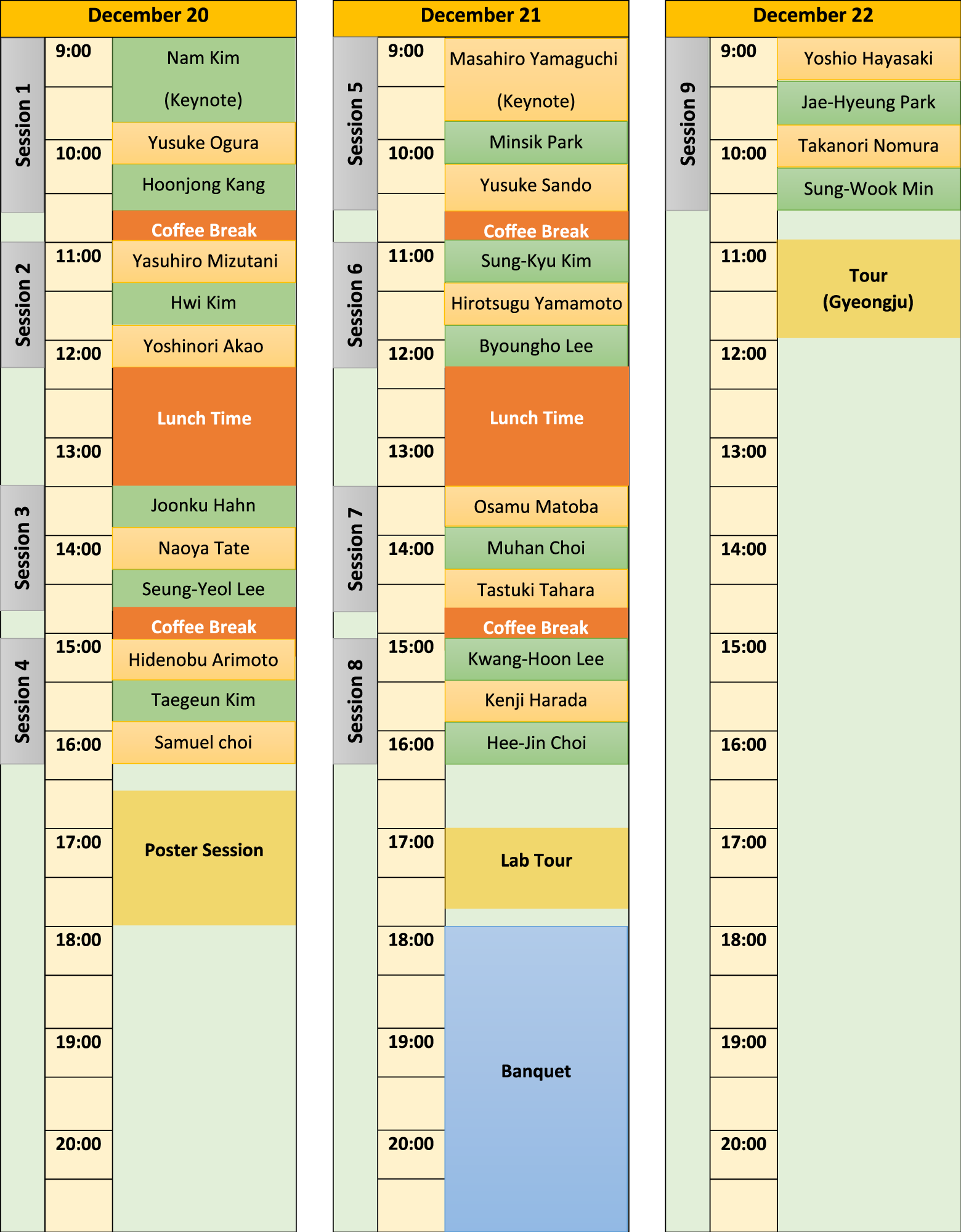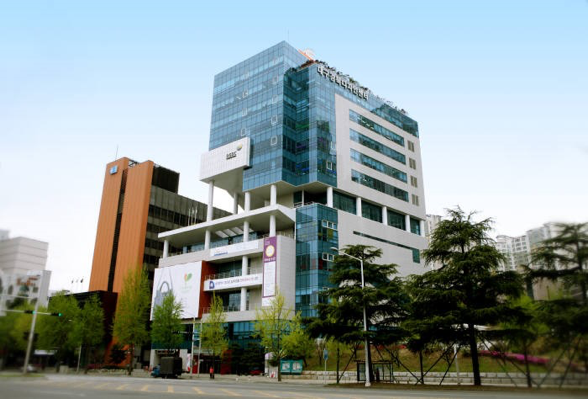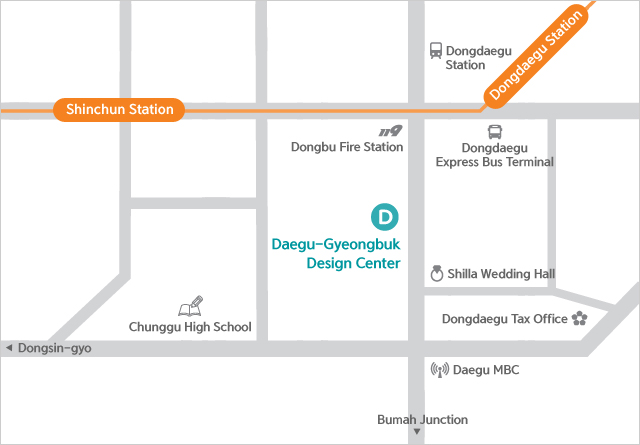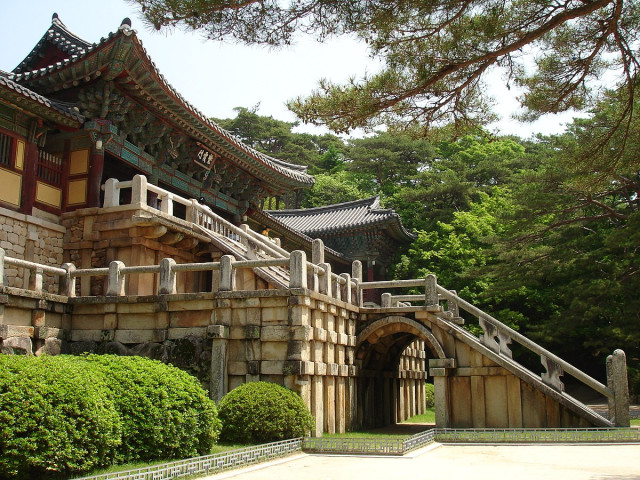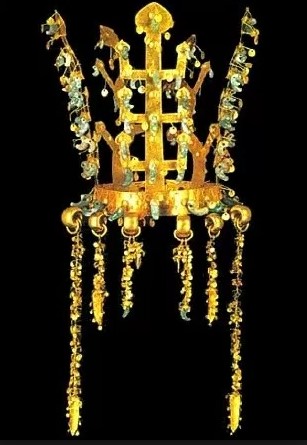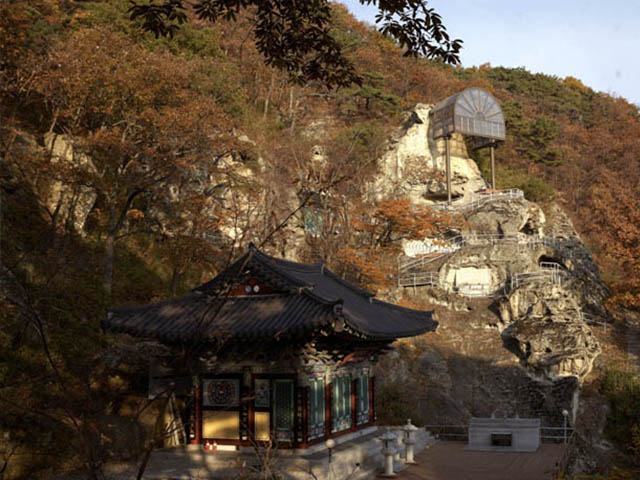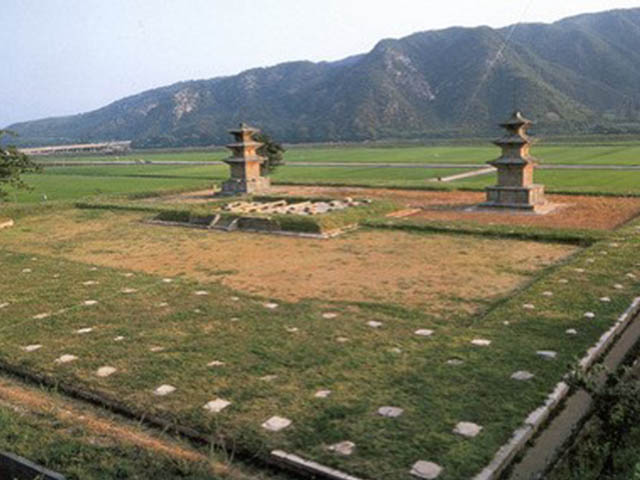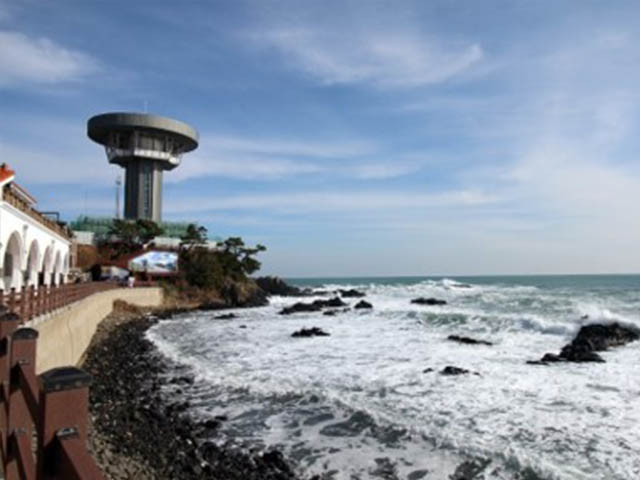| Date |
Session |
Time |
Speaker |
Plenary |
Title |
| Dec. 20 |
#1 |
09:00 ~ 09:50 |
Prof. Nam Kim |
Plenary |
Research and development of holographic optical element for three-dimensional display and microscopy |
| 09:50 ~ 10:15 |
Prof. Yusuke Ogura |
|
Three dimensional structure of subdiffraction limit optical patterns |
| 10:15 ~ 10:40 |
Dr. Hoonjong Kang |
|
Research activities in KETI |
| #2 |
11:00 ~ 11:25 |
Prof. Yasuhiro Mizutani |
|
Ghost imaging for single photon counting |
| 11:25 ~ 11:50 |
Prof. Hwi Kim |
|
Fast calculation of wide viewing angle depth-map computer-generated hologram |
| 11:50 ~ 12:15 |
Dr. Yoshinori Akao |
|
Compound-eye imaging for forensics |
| #3 |
13:30 ~ 13:55 |
Prof. Joonku Hahn |
|
3D display making light field inside volume |
| 13:55 ~ 14:20 |
Prof. Naoya Tate |
|
Nanoscale character extraction for nano-optical metric system |
| 14:20 ~ 14:45 |
Prof. Seung-Yeol Lee |
|
Reflective-type reconfigurable digital hologram panel using Ge2Sb2Te5 phase change material |
| #4 |
15:05 ~ 15:30 |
Dr. Hidenobu Arimoto |
|
Unstained tumor detection in digestive organs based on auto fluorescence spectroscopy |
| 15:30 ~ 15:55 |
Prof. Taegeun Kim |
|
Recent progress on 3D target tracking using optical scanning holography |
| 15:55 ~ 16:20 |
Prof. Samuel Choi |
|
Multi-frequency swept en-face optical coherence microscopy with supercontinuum comb for in-vivo measurement of inner ear |
| Poster |
16:40 ~ 18:00 |
|
|
|
| Dec. 21 |
#5 |
09:00 ~ 09:50 |
Prof. Masahiro Yamaguchi |
Plenary |
Full-parallax light-field and holographic displays |
| 09:50 ~ 10:15 |
Dr. Minsik Park |
|
Table-top Holographic Display with Full Parallax |
| 10:15 ~ 10:40 |
Prof. Yusuke Sando |
|
Enlargement of viewing zone of holographic 3D display using a parabolic mirror |
| #6 |
11:00 ~ 11:25 |
Dr. Sung-Kyu Kim |
|
Formation of dynamic viewing zone in autostereoscopic 3D display |
| 11:25 ~ 11:50 |
Prof. Hirotsugu Yamamoto |
|
Aerial Multi-Modal Information Display |
| 11:50 ~ 12:15 |
Prof. Byoungho Lee |
|
Metasurfaces for holograms |
| #7 |
13:30 ~ 13:55 |
Prof. Osamu Matoba |
|
Common-path incoherent digital holography |
| 13:55 ~ 14:20 |
Prof. Muhan Choi |
|
Photonic meta-devices based on optical path control |
| 14:20 ~ 14:45 |
Prof. Tatsuki Tahara |
|
Multidimensional imaging with phase-shifting interferometry |
| #8 |
15:05 ~ 15:30 |
Dr. Kwang-Hoon Lee |
|
Quantitative verification for whether LF display system can serve accommodative function to the observer |
| 15:30 ~ 15:55 |
Prof. Kenji Harada |
|
How to control polarization color |
| 15:55 ~ 16:20 |
Prof. Hee-jin Choi |
|
Researches on effects of physiological depth cues on visual discomfort of augmented reality displays |
| Lab tour |
17:00 ~ 17:40 |
|
|
|
| Banquet |
18:00 ~ 21:00 |
|
|
|
| Dec. 22 |
#9 |
09:00 ~ 09:25 |
Prof. Yoshio Hayasaki |
|
Volumetric Bubble Display |
| 09:25 ~ 09:50 |
Prof. Jae Hyeung Park |
|
Accommodative optical-see-through near-to-eye displays using waveguide and holographic optical elements |
| 09:50 ~ 10:15 |
Prof. Takanori Nomura |
|
Incoherent holography without depth of field |
| 10:15 ~ 10:40 |
Prof. Sung-Wook Min |
|
Recent researches for two type 3D screens: Reflection-type and Transmission-type |
| Gyeongju Tour |
11:00 ~ |
|
|
|
